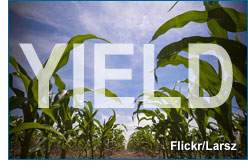 It’s that time again – let’s predict the future!
It’s that time again – let’s predict the future!
One of the key areas in which technology is affecting online media is in publisher yield optimization.
In little over a year, companies like The Rubicon Project, AdMeld, PubMatic, YieldBuild and others have solidified the position of the yield optimizer in the online display advertising ecosystem as it pans for gold across multiple demand-side sources – mostly ad networks, currently – to find the highest paying advertiser possible for a single publisher impression given a variety of factors including frequency capping of ad campaigns.
Yield, though, isn’t necessarily a sell-side concept. The buy side (advertisers) look at purchased inventory and the yield (ROI) it provides to the campaign per click, per impression, per action and more.
Lately, the optimizers have taken up the buyer’s cause with initiatives such as Rubicon Project’s and PubMatic’s demand-side offerings which inch the yield optimization model closer to that of an ad exchange as both buying and selling opportunities are optimized. Evolution to a true ad exchange model will likely take optimizers a few years when liquidity through the ad exchange finally provides a superior yield to other publisher monetization efforts. Tools that manage brand and creative concerns (channel conflict and brand management) will be a critical step for publishers, too.
But, the ad exchange is not the end game for yield optimizers – only part of a next step.
Interoperability and The Commoditization of Exchanges
As overall ad exchange liquidity improves due to superior performance (supercharged with RTB – real-time bidding), the market will demand interoperability between all exchanges with data flowing and unlocking value wherever a single impression may match a client campaign’s goals. (- not to mention the government may demand interoperability, too!)
Moreover, interoperability will only increase the number of potential demand-side bidders in any auction and benefit the publisher’s selling price. Publishers will crave liquidity in ad exchanges. The big media guys (Turner, Viacom, Time Inc.) will need a lot of it to make a significant move to exchanges.
Whether it’s Google or Yahoo! or AdMeld or any of the other contenders, the exchange model will no doubt provide cash flow to infrastructure providers. But, with no exclusivity in the world of the open exchange, the big opportunity will move elsewhere.
Next Stop, The Futures Exchange
As it does today, not all the world’s inventory will be traveling through the just-in-time spot market as agency holding companies and large direct advertisers will buy reserved inventory in upfronts, for example. In the process, new, futures (reserved) display ad exchanges will be created that give publishers the opportunity to secure revenue as well as outline how and to whom, through a rules-based system, a buyer of futures inventory may re-sell that inventory on the futures exchange or in a spot market exchange.
AdExchanger Daily
Get our editors’ roundup delivered to your inbox every weekday.
Daily Roundup
Yieldex, a yield optimization company focused on inventory controlled by the direct sales team, is an interesting step in the futures exchange direction as it concentrates on “enabling publishers to manage, predict and optimize this premium inventory” according to Tom Shields in his AdExchanger.com April interview.
Imagine the optimization and heavy data crunching as publishers and advertisers look at the opportunity between futures/reserved exchanges and the spot market. Here is where evolving optimization companies will be well-positioned to inform inventory holders whether to buy, sell or hold.
It’s going to be crazy. Run for your lives!
Wait…. It won’t be crazy as you can bet the contents of your favorite venture capitalist’s wallet that technology companies will figure out how to unlock this new optimization opportunity easily for all.












